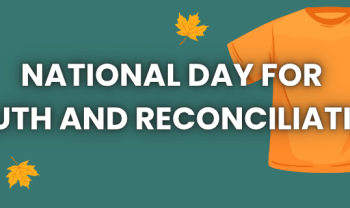Native American heritage is rich with trailblazers who have made significant contributions to science, technology, engineering, and mathematics (STEM). From aerospace engineering to cultural preservation through art, these individuals have not only excelled in their fields but have also paved the way for future generations. Let’s explore the stories of five remarkable Native Americans who have left an indelible mark in the world of engineering and beyond.
Mary Golda Ross (Cherokee Nation)
Mary Golda Ross, a member of the Cherokee Nation, stands as a trailblazer in aerospace engineering. She made history as the first known Native American female engineer, working at Lockheed Corporation during the height of the space race. Ross’s contributions were pivotal in advancing satellite systems and interplanetary travel concepts, notably the Agena rocket stage used in the Gemini and Apollo programs. Her work not only propelled space exploration but also inspired generations of women and Native Americans to pursue careers in STEM.
Reference: https://en.wikipedia.org/wiki/Mary_Golda_Ross
John Herrington (Chickasaw Nation)
John Herrington, a member of the Chickasaw Nation, reached for the stars as a NASA astronaut and engineer. With degrees in applied mathematics and mechanical engineering, Herrington became the first enrolled member of a Native American tribe to venture into space. His mission specialist role on STS-113 involved critical tasks on the International Space Station, contributing to scientific research and space station assembly. Beyond his astronautical achievements, Herrington advocates passionately for STEM education among Native American youth, aiming to ignite curiosity and inspire future leaders in science and engineering.
Reference: https://en.wikipedia.org/wiki/John_B._Herrington
Susan LaFlesche Picotte (Omaha Tribe of Nebraska)
Susan LaFlesche Picotte, a member of the Omaha Tribe of Nebraska, blazed trails in healthcare and community development. Although not an engineer by modern definition, Picotte was the first Native American woman to earn a medical degree in the United States. She dedicated her life to advocating for public health initiatives and engineering solutions within Native American communities, establishing a hospital and improving healthcare access. Picotte’s legacy underscores the intersection of healthcare and infrastructure development as critical components in enhancing quality of life for Indigenous populations.
Reference: https://en.wikipedia.org/wiki/Susan_La_Flesche_Picotte
Waneek Horn-Miller (Mohawk)
Waneek Horn-Miller, a Mohawk woman, exemplifies leadership in civil engineering and Indigenous advocacy. Initially renowned as an Olympic athlete in water polo, Horn-Miller holds a degree in civil engineering and has leveraged her expertise to champion sustainable development and community empowerment. Her initiatives focus on infrastructure improvements, clean water access, and environmental stewardship within Indigenous communities across Canada. Horn-Miller’s multifaceted contributions highlight the pivotal role of engineering in addressing social, environmental, and cultural challenges faced by Indigenous peoples.
Reference: https://en.wikipedia.org/wiki/Waneek_Horn-Miller
Gerald McMaster (Plains Cree, member of Red Pheasant First Nation)
Gerald McMaster, of Plains Cree descent and a member of the Red Pheasant First Nation, merges art, engineering principles, and cultural preservation. As an artist, curator, and academic, McMaster has curated exhibitions and contributed significantly to Indigenous art and cultural studies. His installations often incorporate engineering concepts to explore cultural identity and address contemporary issues. McMaster’s work underscores the innovative potential of combining art and engineering to amplify Indigenous voices and promote cultural resilience in a rapidly changing world.
Reference: https://en.wikipedia.org/wiki/Gerald_McMaster
Conclusion
These five remarkable individuals exemplify the diversity and impact of Native Americans in engineering and STEM fields. Through their pioneering spirit, innovation, and dedication, they have not only advanced their respective disciplines but have also inspired future generations to pursue excellence and advocate for Indigenous rights and cultural heritage. Their stories serve as a testament to the enduring legacy of Native American contributions to science, technology, and engineering worldwide.





